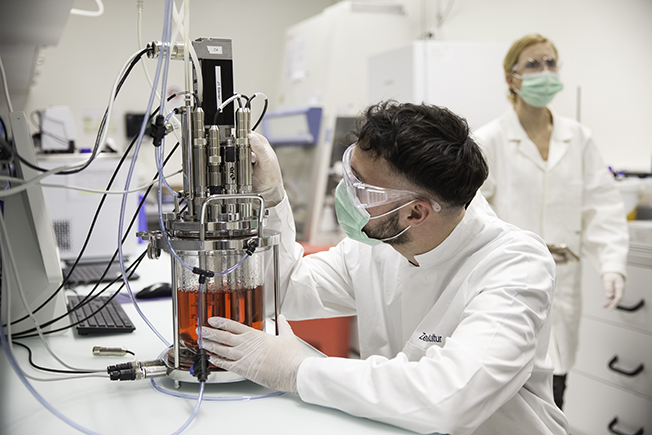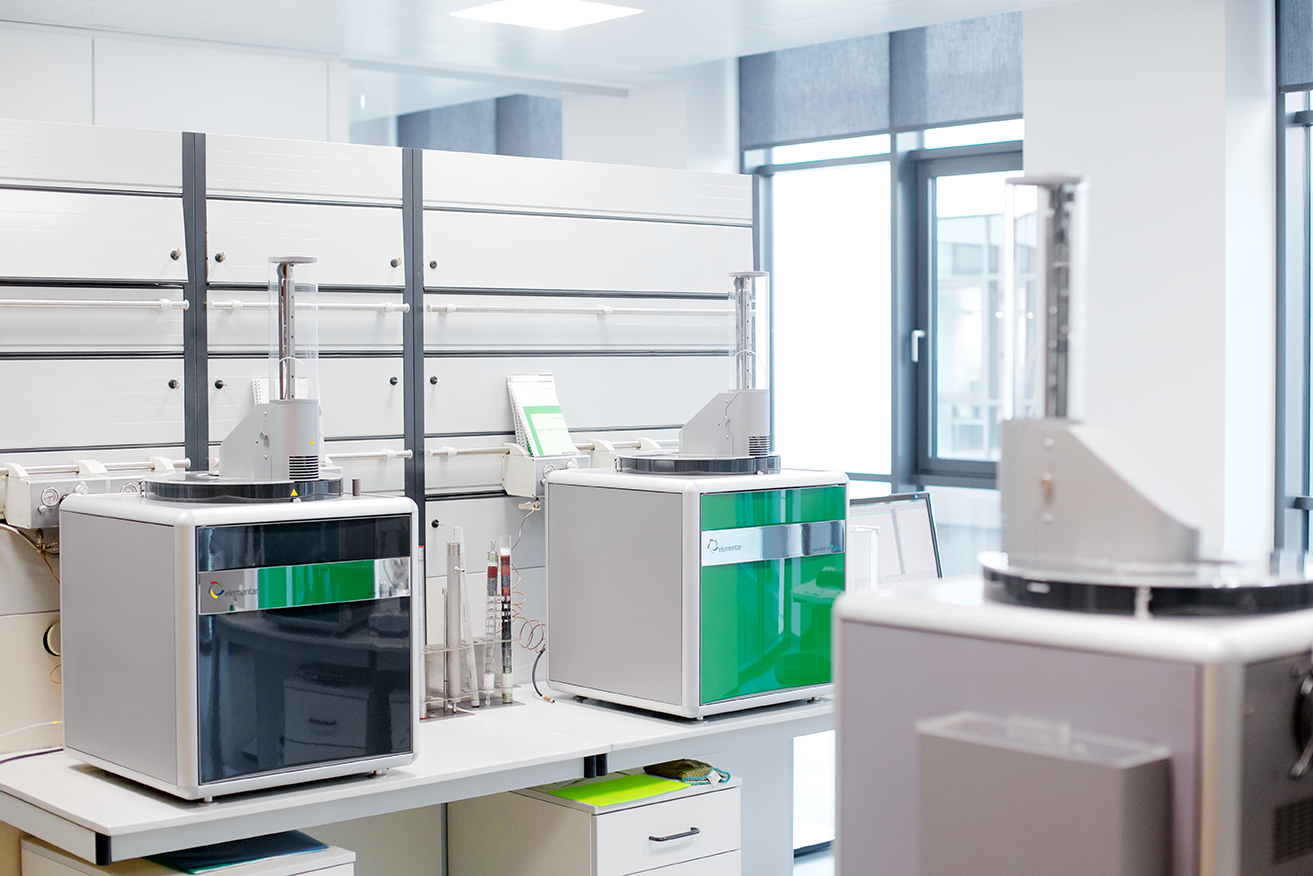

Innovation and sustainability in food: Building a resilient, net-zero future
CPI’s Kris Wadrop explores the practicalities, potential, and pitfalls of building a resilient, sustainable food system – from scaling to navigating regulatory challenges and leveraging AI for innovation
The global food industry faces mounting challenges, from climate change to resource scarcity and evolving consumer expectations. As demand for sustainable solutions grows, alternative proteins are taking center stage. UK company CPI plays a key role in this shift, led by Kris Wadrop, Managing Director, Sustainable Materials. With deep expertise in industrial innovation, Wadrop believes science and collaboration can reshape food production.
“The objective of net zero is a key market driver for alternative protein technologies,” Wadrop begins. “If you think about it, society is always evolving. Consider what we ate 100 years ago compared to today – there’s been a significant shift.”
This shift goes beyond consumption patterns, fostering greater awareness of health, sustainability, and supply chains. Wadrop sees it driving diverse dietary shifts – some embracing simplicity, others leveraging low-impact technologies.
Yet, the push for net zero comes with hurdles, such as concerns over ultra-processed foods. “Processing plant-based ingredients to closely mimic meat often requires additives,” Wadrop notes. “This creates a marketing challenge, as these products risk being perceived as unhealthy.” Balancing health, sustainability, and taste is therefore key. “What we need,” Wadrop emphasizes, “is a roadmap that allows consumers to feel good about their choices without sacrificing their expectations for quality and affordability.”

Taste, texture, and consumer conditioning
The intersection of health and sustainability presents a major challenge: consumer acceptance. “Taste is everything,” Wadrop asserts. “When was the last time you willingly ate something you didn’t like the taste or texture of?” He adds that decades of consumer conditioning, especially in Western markets, have shaped a preference for processed foods high in sugar and salt. “Our palates have been manipulated,” he notes, making the shift to wholefoods difficult.
Beyond taste, accessibility, and affordability are key. “How do you compete with a £1 frozen pizza?” Wadrop asks. “It’s cheap and calorie-dense but neither healthy nor wholesome.” The gap must be bridged, ensuring sustainable food is both appealing and financially viable.
Wadrop also highlights the role of education in shaping consumer preferences. “If we can retrain palates to enjoy less processed and more natural foods, it will go a long way in achieving both health and environmental goals,” he adds.
This process involves creating food products that align with consumer expectations while gradually shifting their preferences over time. With a wry smile, Wadrop adds, “Start with kids at schools – they probably have more influence over what goes into the average household shopping basket than politicians!”
Shifting to technology, Wadrop highlights the varying progress of alternative protein innovations.
While cell-cultivated meat is still emerging, precision fermentation is already established in food production. “Microbial and fungal proteins,” Wadrop explains, “are grown in fermenters, much like brewing beer. They can be blended with traditional meat to maintain nutritional profiles while reducing greenhouse gas emissions.”
These advancements align with the growing flexitarian market. “Flexitarians represent the vast majority of consumers,” he notes. “This is where the market is heading: integrating alternative proteins into familiar meals without compromising taste, texture, or nutrition.”
The practicality of these integrations is another key factor Wadrop emphasizes. “For most consumers, it’s not about adopting a completely vegan diet overnight but finding ways to make incremental changes that align with their values,” he says. By blending alternative proteins with conventional meat, the food industry can offer solutions that meet consumer expectations while reducing environmental impact.
“What we need is a roadmap that allows consumers to feel good about their choices without sacrificing their expectations for quality and affordability”
Overcoming feedstock challenges
Despite technological progress, fermentation’s dependence on agricultural feedstocks adds complexity. The long-standing ‘food versus fuel’ debate persists, but Wadrop points to innovative solutions. “Companies such as LanzaTech are using CO₂-absorbing autotrophs,” he explains. “These processes convert atmospheric CO₂ into protein and valuable byproducts, reducing reliance on traditional carbon sources.”
Scaling these technologies is challenging and requires supportive policies and investment. “Governments must establish financial and policy frameworks that allow pioneering technologies to thrive,” Wadrop asserts.
Feedstock innovation is also evolving. “We’re seeing exciting developments in using agricultural byproducts and even industrial emissions as feedstocks,” he notes. “These approaches not only reduce waste but also provide a more sustainable foundation for production.”
Fermentation technologies are transforming sustainable food production by reducing environmental impact. “Submerged fermentation enables ingredient production in a controlled setting,” Wadrop explains, “reducing reliance on farmland and mitigating disruptions.”
However, using gaseous feedstocks like CO₂ or methane presents technical challenges. “Companies like Calysta and LanzaTech have developed solutions such as tubular flow reactors and airlift systems,” he notes.
Different fermentation methods offer unique advantages. Solid-state fermentation, for example, enables the production of functional ingredients like Lion’s Mane mushrooms. “Together, these methods push the boundaries of sustainable food production,” Wadrop says.
Advances in bioreactor design further enhance efficiency. “These systems allow precise control over pH, temperature, and nutrient flow, ensuring optimal yields,” he adds.
Stabilization and formulation
Beyond production, turning raw materials into market-ready products requires post-processing. “What comes out of a fermenter isn’t immediately usable,” Wadrop explains. “It must be stabilized and processed into a transportable, shelf-stable ingredient.”
CPI helps bridge this gap. “Our goal is to help partners create sustainable, nutritious products that aren’t classified as ultra-processed foods,” Wadrop adds.
Meeting technical and regulatory standards is essential, but consumer appeal is just as critical. Developing versatile formulations enhances market potential. “Adaptability is key,” Wadrop says. “If we offer formulations that work across multiple applications, it reduces barriers to adoption.”

Regulatory navigation and collaboration
No discussion of alt proteins is complete without addressing regulations. Wadrop stresses proactive engagement with bodies like the UK’s Food Standards Agency (FSA). “Working with regulators helps companies understand the tests and evidence required for compliance,” he says.
The FSA’s sandbox initiative shows how collaboration can streamline regulatory processes.
“By collaborating rather than competing, companies can navigate regulations more efficiently,” Wadrop says. Such efforts are key for ensuring safety and fostering innovation, especially for SMEs with limited resources.
Wadrop advocates for regulatory harmonization. “A unified approach would streamline commercialization and foster cross-border collaboration,” he notes.
Collaboration goes beyond regulators to industry partnerships. CPI’s work with companies like Calysta and Adamo Foods highlights their value. “We help companies scale from test tubes to commercial fermenters,” Wadrop explains. “Our infrastructure and expertise provide a major advantage in navigating commercialization.”
Calysta’s methane-based protein and Adamo’s fermenter-produced ‘cutlets’ exemplify how CPI plays a role in scaling, market validation, and navigating regulatory approvals. By providing infrastructure and expertise, CPI helps innovative food companies transition from concept to commercialization. “These highlight collaboration’s critical role in accelerating innovation,” Wadrop notes. He also stresses the need for long-term partnerships. “By fostering relationships beyond initial commercialization, we ensure continued innovation and adaptability in a rapidly changing market,” he adds.
The role of AI and long-term vision
Looking ahead, Wadrop sees AI as a game-changer. “It holds immense potential,” he says, “but its impact depends on structured data and clear objectives.” Integrating AI into alternative proteins can optimize processes, cut costs, and improve scalability. However, realizing these benefits requires investment in data infrastructure and strategic planning.
“The UK must adopt a more US-style investment approach,” Wadrop suggests. “Embracing risk and understanding that enough successes will meet market demands and societal needs.”
He also stresses the need to align AI with sustainability goals. ‘AI is a tool, not a standalone solution. Its true value lies in optimizing decision-making across the value chain.”
Wadrop’s insights highlight the intersection of science, technology, and collaboration in advancing alternative proteins. “At CPI, we’re building the foundation for a food industry rooted in consistency, efficiency, and resilience,” he concludes. By tackling challenges head-on, CPI and its partners are shaping a sustainable, health-focused future.
For more information about CPI, please click here
If you have any questions or would like to get in touch with us, please email info@futureofproteinproduction.com


%20ILVO%202.jpg)

.png)

